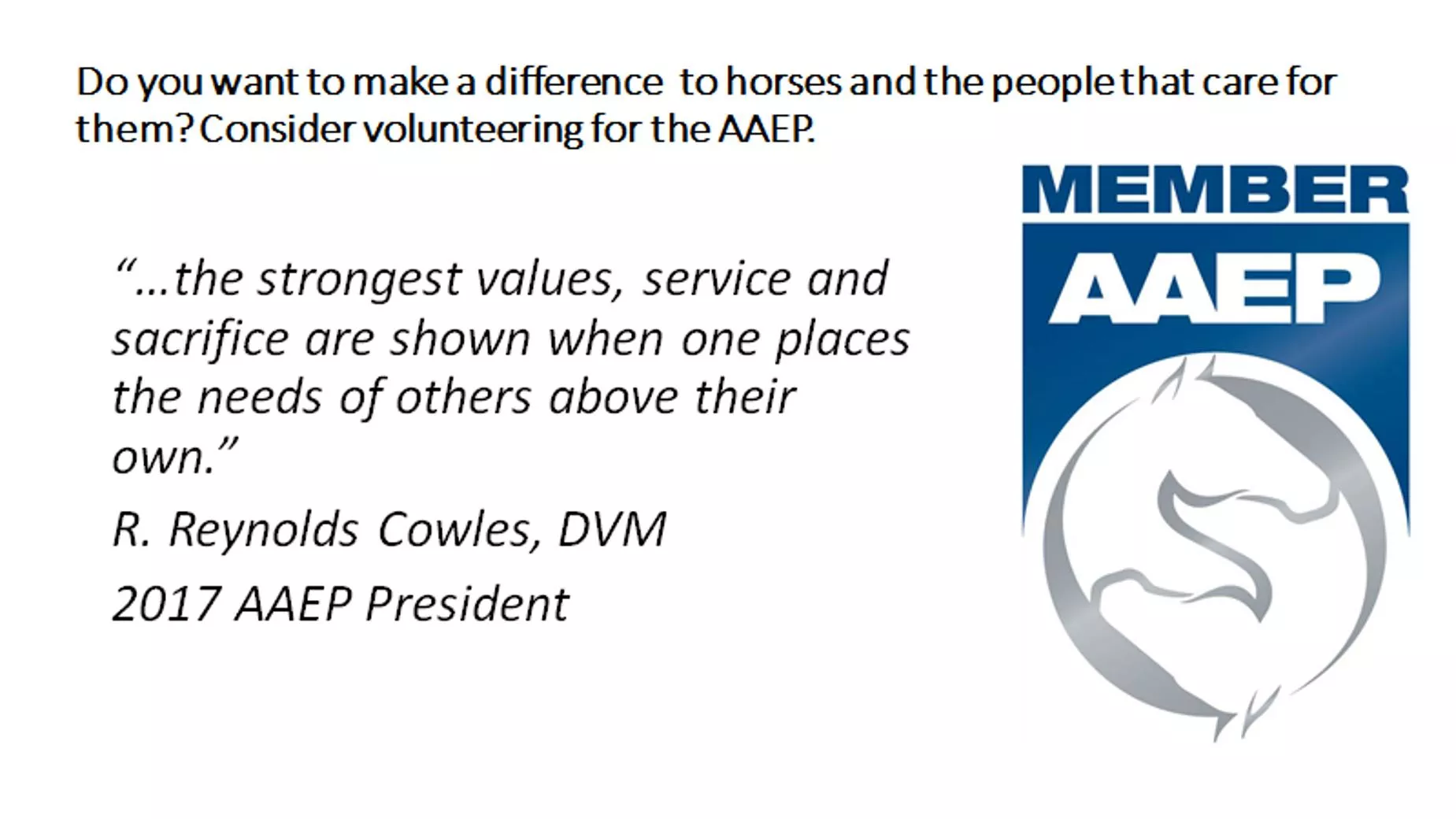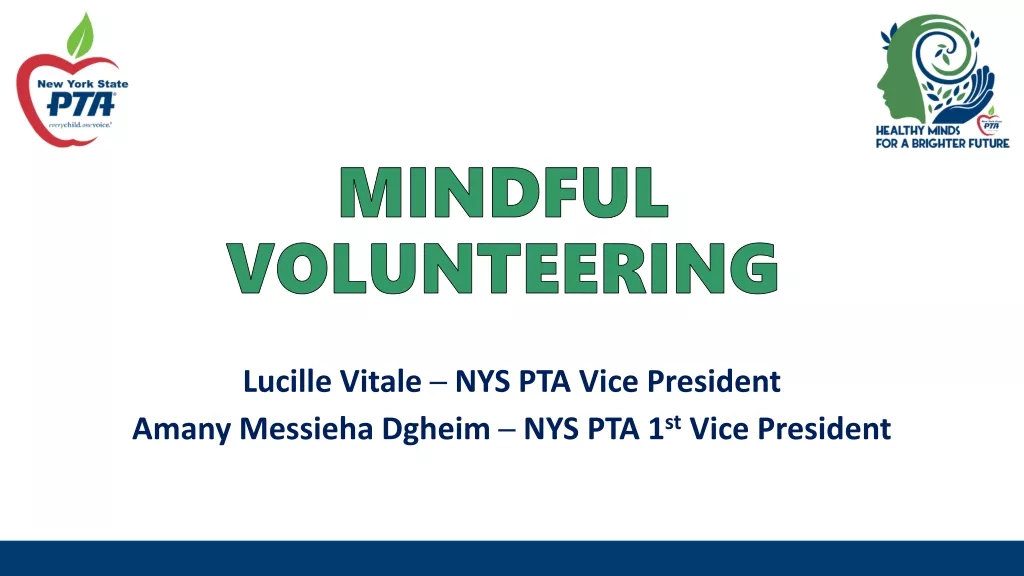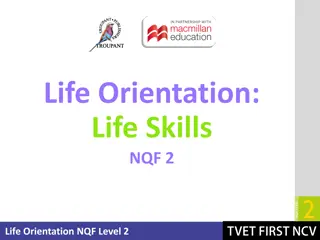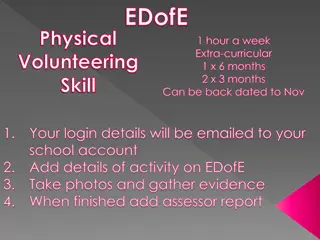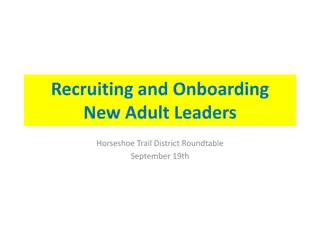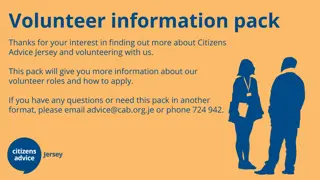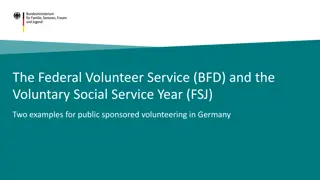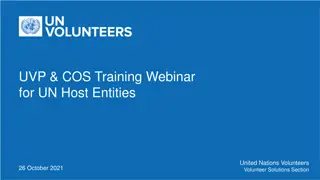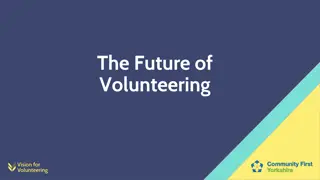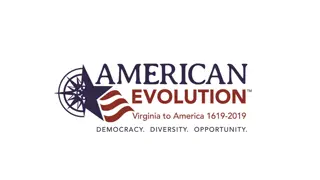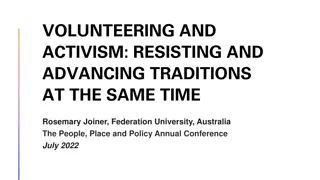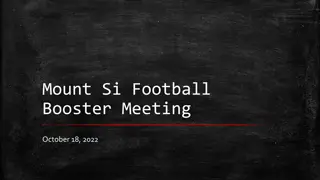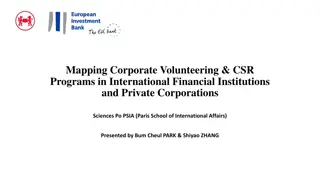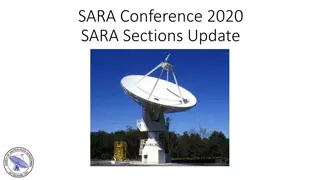Opportunities for Volunteering with AAEP
Explore various volunteer opportunities with the American Association of Equine Practitioners (AAEP), such as serving on committees, councils, or task forces. Learn about the governance model, committees, and how to get involved through the Volunteer Interest Form. Understand the competitive application process and steps to increase your chances of serving on a committee of your interest.
Download Presentation

Please find below an Image/Link to download the presentation.
The content on the website is provided AS IS for your information and personal use only. It may not be sold, licensed, or shared on other websites without obtaining consent from the author.If you encounter any issues during the download, it is possible that the publisher has removed the file from their server.
You are allowed to download the files provided on this website for personal or commercial use, subject to the condition that they are used lawfully. All files are the property of their respective owners.
The content on the website is provided AS IS for your information and personal use only. It may not be sold, licensed, or shared on other websites without obtaining consent from the author.
E N D
Presentation Transcript
There are a variety of ways to volunteer You might be interested in being a member of a committee or council, liaison to another association or state or serve on a task force (list other volunteer opportunities here if you prefer something else). Here, you ll get information about how the AAEP is organized and you ll get an idea of some of the other volunteer opportunities available.
Committees and Councils Councils are volunteer groups within the AAEP with a specific charge to provide guidance to the AAEP leadership. Councils may recommend the formation of task forces, member education, position statement development, motions for the board of directors, or other courses of action on a particular issue related to their subject area. Committees are volunteer work groups within the AAEP which have an ongoing, annual function and a focused charge related to a specific area of veterinary medicine, the equine industry or association governance. Policies and procedures relative to committees (e.g. appointment, terms, eligibility, etc.) are further defined in the AAEP Articles of Incorporation and Bylaws. Please see the complete listing of Committees and Councils and the current roster of members in the left-hand menu. Do you want to get involved with your Association? Click here to fill out the Volunteer Interest Form.
Thinking about volunteering? We appreciate your interest in serving on an AAEP committee! However, please understand that not everyone who wants to serve will be immediately chosen. The application process is competitive. Many people would like to serve on committees. Unfortunately, there is not room for everyone to serve at any given time. It is very rare that an applicant will be asked to serve on the first application. In order to increase your chances of serving: - Consider applying to more than one committee - Please provide as much biographical information as possible on the Volunteer Information Form to aid in your selection. - Please note any experience pertinent to a particular committee, as well as any other committees past and present you have served on, on the Volunteer Interest Form (CLICK HERE).
Id like serve on a committee. What do I need to do? First, you must complete the Volunteer Interest Form here. Read about the committees and find which ones best fit your interests. Try to attend committee meetings that interest you. These typically meet the Saturday before the annual AAEP meeting begins so arrive a day early. Be sure to sign the attendance sheet. Don t be shy--let committee members or the committee chair know your interests.
Id like serve on a committee. What do I need to do? If you aren t nominated for a committee position right away, don t be discouraged AAEP is always in need of volunteers Continue reaching out to committee chairs and let them know of your interest There are many different volunteer roles in the AAEP and your efforts to help will not go unnoticed
Some committee require significant time commitment A good example of a committee that requires a significant time commitment is the Education Program Committee (EPC). A good way to find out more about the EPC is to contact one or more of it s current members.
Educational Programs Committee (EPC) Goals: To provide input to the program chair regarding the scientific program for the Annual Convention and other association CE meetings; to advise on policy matters concerning the Annual Convention proceedings; and to review and recommend action based on evaluations of AAEP CE meetings. Phoebe Smith, Chair, 2018 (805) 245-0561 smith@rivieraequine.com Charles F. Scoggin, Vice Chair, 2018 charliedvmms@yahoo.com Board Liaison: Amy Grice Staff Liaison: Carey Ross
ACTIVITIES AND RESPONSIBILITIES - EPC The EPC participates in 8-10 conference calls/year The chair travels to Lexington twice each spring to work on the AAEP program Attendance at annual meetings at the AAEP are part of the EPC member s role
Educational Programs Committee (EPC) Members: 2018 2017 Charles Arensberg Heidi Banse Matt Brokken James Bryant Chelsie Burden Elizabeth Callahan Michelle Coleman Rebecca Stinson-Dixon Jeremiah Easley Liberty Getman Casey Gruber James Hamilton Kevin Haussler Karen Jackman David Levine Yvette Nout-Lomas Martha Mallicote Scott McClure Rebecca McConnico Tracy Norman Gillian Perkins Korin Potenza Sarah Sampson David Scofield Jennifer Sonis Travis Tull Nathan Voris Carolyn Weinberg Monica Aleman Scott Anderson Amanda Armentrout Carolyn Arnold Barry Ball Luke Bass Colleen Best Jeff Bunn Kristin Chaney Joe Dowd Lane Easter Ben Espy Susan Gillen Casey Gruber Caleb Harms Amy Johnson Alison Morton Gordon Plotts Steve Reed Grant Rezabek Kurt Selberg Jennifer Smith Mary Swartz Tracy Turner Ashley Whitehead Beau Whittaker Chris Wilhite Dana Zimmel
If you know business, the Finance & Audit Committee may be of interest to you Goals: To advise the board on financial matters, including investments, budgets and capital expenditures; and to review monthly, quarterly and annual financial statements. Jack Easley, Chair and Board Liaison, 2017 (502) 633-0112 easleydvm@aol.com Staff Liaison: Lori Rawls
Finance & Audit Committee Members: 2017 2018 Vivian Freer Margo Macpherson Jeff Berk If these committees are not what you are looking for, there are many others such as-
Foundation Advisory Council Goal: To organize and direct fundraising efforts, evaluate and prioritize funding requests, and develop programs and policies that meet the mission of the Foundation: To improve the welfare of horses. Rick Mitchell, Chair, 2019 (203) 270-3600 rmitch2074@aol.com Board Liaison: Kathleen Anderson Staff Liaison: Keith Kleine
Foundation Advisory Committee - Activities and Responsibilities Participate in a minimum of three conference calls annually, with two face-to-face meetings (at the Summer Focus meeting and again at the Convention). There is also an orientation call for new members. Currently, the Foundation has four standing subcommittees, which are in alignment with the Foundation Strategic Plan. They are as follows: Governance, Education (which includes scholarships), Benevolence, and Research. Members of this council can expect to be involved in policy recommendations, service in one or more of the subcommittees, review of grant applications submitted for Foundation funding, and assisting the foundation prioritize funding areas.
Foundation Advisory Council Members: 2017 2018 2019 Kent Carter Jack Easley Leslie Easterwood Susan White Anthony Blikslager Ernie Martinez Monty McInturff Lisa Metcalf Mark Baus Rocky Bigbie Duane Chappell Elizabeth Fish Nat White
Leadership Development Committee (LDC) Goal: To identify and develop future leaders within the AAEP for councils, committees, and other volunteer opportunities. Rachel Cezar, Chair, 2017 (240) 412-4517 drrachelcezar@gmail.com David Ramey, Vice Chair, 2017 ponydoc@pacbell.net Board Liaison: Katherine Garrett Staff Liaison: Nick Altwies
ACTIVITIES AND RESPONSIBILITIES - Leadership Development Committee (LDC) The LDC conducts meetings once a month via conference call Subcommittees are developed on as needed basis, and have included modification of the volunteer interest form, development of volunteer candidate selection protocols, and development of leadership materials. Other subgroups are developed based on emerging issues. The LDC slates of candidates for committee, task force, and other volunteer opportunities within the AAEP according to a schedule requested by the Board of Directors
Leadership Development Committee (LDC) Members: 2017 1018 2019 Brian Carroll Katie Flynn Mike Gotchey Melissa Hines Al Kane Dan Keenan Ann Rashmir-Raven Mitchell Rode Nathan Voris Rocky Bigbie Jennifer Finley Amanda House Scott Palmer Charlie Scoggin Debbie Spike-Pierce Steve Trostle Claudia True Colleen Best Amy Poulin-Braim Apryle Horbal Kelly Tisher Angela Yates
Infectious Disease Committee Goal: To monitor and update disease information on a regular basis for the Equine Disease Communication Center and AAEP websites, as well as AAEP Control & Vaccination Guidelines; and, to make additions, updates and relevant changes as needed. Additionally, the committee will also serve to evaluate infectious disease issues affecting the equine population and recommend courses of action to the AAEP leadership. Grant Rezabek, Chair, 2018 (405) 880-1781 grant.rezabek@okstate.edu Board Liaison: Leslie Easterwood Staff Liaisons: Keith Kleine and Bailey McCallum
Infectious Disease Committee - Activities and Responsibilities Participate in a minimum of three conference calls a year and one face-to-face meeting held at the annual convention. Currently, there are three subcommittees: Equine Disease Communication Center, Guidelines, and Biosecurity. Others formed on an as needed basis. Members of this committee provide expertise to both the AAEP and the Equine Disease Communication Center relative to web site content and current infectious disease and biosecurity related guidelines for members and the horse industry.
Infectious Disease Committee Members: 2018 2019 2020 Stephanie Brault Ben Buchanan Ryan Ferris Martha Mallicote Linda Mittel Peter Morresey Kerry Pride Grant Rezabek Lane Easter Katie Flynn Barbara Jones Bob Mealey Tracy Norman Angela Pelzel-McCluskey Ashley Whitehead Laszlo Hunyadi Kerby Weaver
Nominating Committee Goal: To oversee elections of board members; make recommendations on incoming officer appointments, and provide input to the board on policy matters related to leadership in the association; and to see that leadership positions are filled on a fair and equitable basis with the best interest of the association in mind. This committee also makes recommendations to the board on all award nominees. Kent Carter, 2017 Kathleen Anderson (979) 272-3134 Foley kcarter@cvm.tamu.edu Board Liaison: Staff Liaison: David
Nominating Committee Members: 2017 2018 2019 Jeff Blea Rob Franklin Wendy Vaala Kent Carter Carolyn Weinberg Kathleen Anderson
President's Advisory Council Goal: To serve as a resource for the president and provide historical perspective for the leadership. Kathleen Anderson, Chair and Board Liaison, 2017 (410) 392-6646 kandersondvm@equinevetcare.com
President's Advisory Council Members: Rick M. Arthur G. Marvin Beeman Jerry B. Black Jeff A. Blea Larry R. Bramlage Bernard F. Brennan Thomas D. Brokken Kent Carter James R. Coffman Robert W. Copelan Douglas G. Corey Ann E. Dwyer Daniel V. Flynn Benjamin Franklin, Jr. Eleanor M. Green Peter F. Haynes J. Clyde Johnson A. Gary Lavin Thomas R. Lenz Robert D. Lewis William R. McGee C. Wayne McIlwraith John S. Mitchell William A. Moyer Gary L. Norwood Scott E. Palmer Richard J. Sheehan Terry D. Swanson M.B. Teigland Charles D. Vail John T. Vaughan Harry W. Werner Nathaniel A. White, II
Professional Conduct & Ethics Committee Goal: To review and analyze ethical issues facing the AAEP membership; to formulate and review recommendations relative to AAEP position statements as they pertain to ethical practice; to develop and conduct a review procedure for evaluating complaints and allegations of unethical practice by AAEP members; and to recommend disciplinary action to the board regarding membership privileges. Tom Riddle, Chair, 2017 (859) 233-0371 tomr@roodandriddle.com Board Liaison: Dan Keenan Staff Liaison: David Foley
Professional Conduct and Ethics Committee - Activies and Responsibilities There are no regularly scheduled conference calls, rather they are conducted on an as needed basis. There is one face-to-face meeting at the convention, but there is the possibility of being involved in an additional meeting during the year relative to a disciplinary hearing if needed. Disciplinary hearings are usually conducted at the convention, with the full committee; however, we do have a provision in place to conduct them at other times of the year with a subset of the committee. Currently, there are no standing subcommittees, though some have been formed in the past for specific projects. The primary role of the committee members is focused on member education on ethical areas of practice, including contributing to regular features in EVE and website content development. Additionally, the committee does have the responsibility of conducting disciplinary hearings if a case arises.
Professional Conduct & Ethics Committee Members: 2017 2018 2019 Nancy Diehl Faith Hughes Sara Langsam Nat Messer Karen Nyrop Eric Peterson David Ramey Ryan Carpenter Jennifer Durenberger Paula Horne Debbie Lamparter Melissa McKee Kenton Morgan Kelly Farnsworth Ted Vlahos Kim Voller
Racing Committee Goals: To proactively identify and address issues of importance to equine veterinarians and racing authorities; to provide leadership and expertise on all aspects of racing that affect the health and welfare of the horse; to communicate to AAEP members and racing stakeholders the AAEP s positions and recommendations pursuant to the welfare and safety of the horse; and to educate AAEP members and industry stakeholders regarding best practices and ethical care of the racehorse. Jeff Blea, Chair, 2019 (626) 836-1688 jbleadvm@gmail.com Board Liason: Jeff Berk Staff Liaison: Sally Baker
ACTIVITIES AND RESPONSIBILITIES - Racing Committee May conduct conference calls on an as needed basis Subcommittees include Horse racing legislative review and a 10 Point Plan. Other subgroups are developed based on emerging issues. Monitor federal legislation efforts, as well as, co-op attempts regulating medication and testing. Involves establishing and maintaining dialogue with industry stakeholders and continuing to foster those relationships in a leadership role.
ACTIVITIES AND RESPONSIBILITIES - Racing Committee Active participation in both RMTC and ARCI. The racing committee will need to be represented in some fashion at these meetings, as well as, other industry collaborative events serving the industry as a resource. Address the business model and develop strategies and tools to potentiate a paradigm shift in the business model at the racetrack. Internal and External communication to include quarterly updates to members and press release of items when deemed appropriate by the leadership. Explore avenues whereby the public and horsemen/horsewomen can appreciate the value of an AAEP member racetrack practitioner. Continue to work through the current strategic plan and finalizing parts of the plan that have not yet been accomplished. Much of the racing strategic plan has been accomplished or is in process.
Racing Committee Members: 2017 2018 2019 Alan Chastain Keith Latson Foster Northrop Andy Roberts Mary Scollay Dan Duncan Ron Friedman Cody Johnson Debbie Lamparter Stuart Brown Stephen Dey Lydia Hamilton John Peloso
Welfare & Public Policy Advisory Council Goals: To monitor welfare issues and matters of public policy in both the equine industry and veterinary profession for the purposes of advising AAEP leadership on such matters as well as to make recommendations on a particular course of action by the association. Cynthia MacKenzie, Chair, 2017 (859) 806-3757 vetmack98@gmail.com Bruce Whittle, Vice Chair, 2018 brucewhittle@gmail.com Board Liaison: Kathleen Anderson Staff Liaisons: Sally Baker/Keith Kleine
ACTIVITIES AND RESPONSIBILITIES - WPPAC The WPPAC tries to have at least 4 conference calls a year each around 1.5 hours There may be 4-5 subcommittees going at any given time, depending on needs that come through The WPPAC evaluates current policy positions pertaining to welfare issues every 3 years
Welfare & Public Policy Advisory Council Members: 2017 2018 2019 Mark Akin Kent Carter Brad Jackman Alina Vale Carolyn Weinberg Joe Bertone Katie Flynn Miles Hildebrand John Lee, Jr. Harry Werner Jim Zeliff Angela Demaree Clara Mason Brad Tanner
Helpful Documents 1. Duties and responsibilities of Committee Chairs 2. Duties and responsibilities of Board Liaisons 3. Duties and responsibilities of Moderators 4. Duties and responsibilities of Committee and Task Force Members 5. How to Ask For Help 6. How to Create a Meeting Agenda 7. How to Delegate 8. How to Keep a Meeting on Track 9. How to Navigate Conflict 10. How to Prioritize Goals and Activities 11. How to Record Helpful Meeting Minutes 12. Ethical Leadership 13. Minutes Template 14. Status Report Template 15. Agenda Template 16. Initiating and Moderating email discussions
Do you have remaining questions about volunteering? Contact: David Ramey at ...


